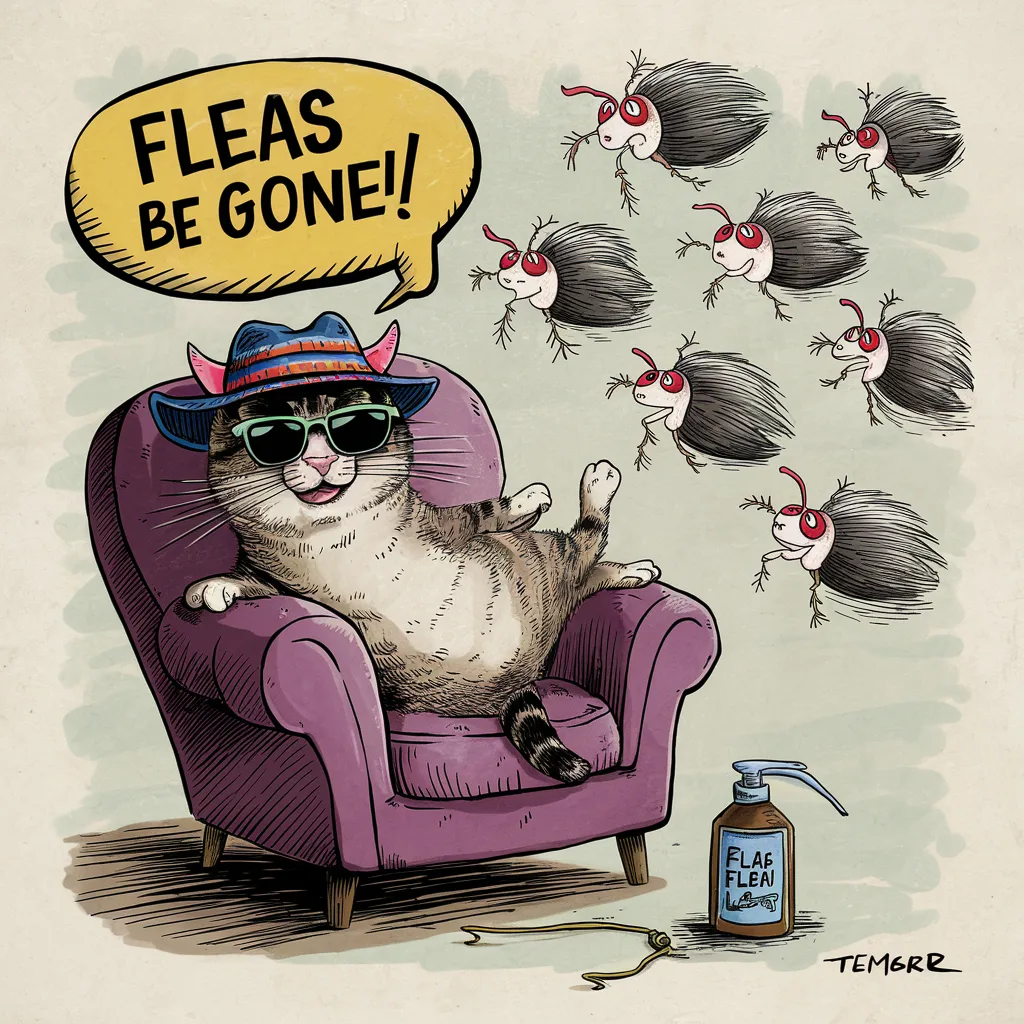Fleas Be Gone: It’s Time for Your Cat’s Flea Treatment!

Cats are more than just pets; they are our best friends and cherished companions. To keep them healthy and happy, it’s essential to address common issues like flea infestations promptly. Here’s why it’s crucial to treat your cat for fleas and how to do it effectively.

Why Flea Treatment Is Important
Health Risks
Fleas can cause significant health problems for your cat. They can lead to skin irritations, allergic reactions, and even more serious conditions like anemia, especially in kittens or older cats. Fleas can also transmit tapeworms and other parasites.
Comfort and Well-being
Flea bites are itchy and uncomfortable. A flea-infested cat is likely to scratch and groom excessively, leading to skin infections and hair loss. Treating fleas promptly helps maintain your cat’s comfort and overall well-being.
Prevention of Infestation
Fleas can quickly spread and infest your home, making it essential to treat your cat as soon as you notice any signs of fleas. Effective flea control prevents the spread of these pests to other pets and areas of your home.
Signs Your Cat May Have Fleas
- Excessive Scratching or Grooming: Cats with fleas often scratch or groom themselves more than usual.
- Visible Fleas or Flea Dirt: You may see tiny, dark fleas moving in your cat’s fur or flea dirt (small black specks) on their skin.
- Hair Loss and Skin Irritation: Flea bites can cause hair loss and red, irritated skin, especially around the neck and tail.
- Restlessness: Flea infestations can make your cat restless and uncomfortable, affecting their behavior and sleep.
How to Treat Your Cat for Fleas
1. Choose the Right Treatment
There are various flea treatments available, including topical treatments, oral medications, flea collars, and shampoos. Consult your veterinarian to choose the best option for your cat’s age, weight, and health condition.
2. Follow Instructions Carefully
Read and follow the instructions on the flea treatment product. Ensure you apply or administer the treatment correctly and at the recommended intervals.
3. Treat Your Home
Fleas can live in your cat’s bedding, carpets, and furniture. Wash your cat’s bedding regularly and vacuum your home thoroughly to remove fleas and their eggs. Consider using a household flea spray or hiring a professional exterminator if the infestation is severe.
4. Regular Check-ups
Regular vet check-ups can help catch flea infestations early and ensure your cat remains healthy. Your vet can also recommend the best preventative measures to keep fleas at bay.
5. Preventative Measures
Use preventative treatments year-round to protect your cat from fleas. Regular grooming and flea combing can also help you detect fleas early and keep your cat’s coat healthy.
Conclusion
Your cat relies on you for their health and happiness. Taking prompt action to treat and prevent flea infestations is a crucial part of responsible pet ownership. By staying vigilant and using effective treatments, you can ensure your feline friend stays comfortable, healthy, and flea-free.
Remember, a happy cat is a flea-free cat!



